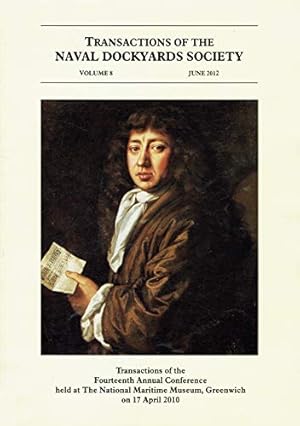Description
This volume of the Transactions of the Naval Dockyards Society focuses upon a period of time - the seventeenth century, resulting in a wide range of contributions. Perhaps not surprisingly, given the wealth of material he has bequeathed historians, Pepys surfaces in many of the papers.Employing a top-down bottom-up framework, the underlying thrust of which endeavours to show that ultimate actions are a result of interpretation of decisions made by those at the topmost level of a hierarchy by those at a less exalted position, Ann Coats analyses the interaction between the Admiralty on the one hand and the decision taking Navy Board on the other in the 1630s. Despite the changes which were effected, she argues that there were nevertheless continuities to be found -- an issue easily overlooked. The role of the royal dockyards in the second civil war of 1648 is examined by Richard Blakemore; the contest for control of these facilities and the importance of the loyalty of dockyard men, and indeed maritime communities, represented a key element in the struggle between royalists and parliamentarians. The plaudits for the recreation of the Navy in the 1660s are usually traced to Charles Il, backed by Pepys, but Hilary Todd demonstrates the vital and very practical contribution made by James, Duke of York, brother of Charles Il, as Lord High Admiral. Not a drinker, gambler or politician, his considerable administrative flair went unnoticed, Macaulay commenting that he would have made a respectable clerk in a dockyard.From broad sweeps to the specific, Frank Fox investigates the circumstances surrounding the explosion in the London in 1665 in the Thames, killing almost all on board. Having done that, he endeavours to establish the nature of her armament and lists the fate of 41 of her guns. The article is, inter alia, a contribution to maritime archaeology. A second specific paper is that by Richard Endsor, who, in researching the Deptford ship the Lenox, noted several references to the feminine gender. He selects eight ladies who, in a variety of ways, had some impact on the yard. Almost inevitably, one had a relationship with Pepys. Richard Blakemore is concerned with privateering (not to be confused with piracy) which was a regulated business activity which not only benefited private investors, but also the state which was able to use the money generated to underpin the Army and the Navy. Pepys was involved, placing him in the possibly conflicting position of being both an investor and a public servant. A concluding piece by David Davies combines the general with the specific, examining the background to the secret Treaty of Dover, 1670. Among the least researched aspects of the Treaty was the proposal to acquire territory in the Netherlands, and to construct a new royal dockyard at Erith.You should note the issue of dates relevant to this period. All dates are given in the Old Style, following the Julian Calendar, but the New Year is taken to begin on I January, with brackets modifying I January to 25 March, when the Julian New Year began. Where the original document acknowledged the New Year (for example 1665 6) this has been retained.
Tag This Book
This Book Has Been Tagged
Our Recommendation
Notify Me When The Price...
Log In to track this book on eReaderIQ.
Track These Authors
Log In to track Ann Coats on eReaderIQ.
Log In to track Frank Fox on eReaderIQ.
Log In to track Hilary Todd on eReaderIQ.
Log In to track J Davies on eReaderIQ.
Log In to track Ray Riley on eReaderIQ.
Log In to track Richard Blakemore on eReaderIQ.
Log In to track Richard Brabander on eReaderIQ.
Log In to track Richard Endsor on eReaderIQ.
